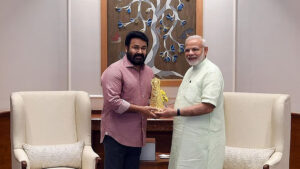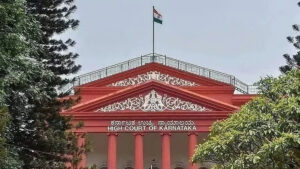In a remarkable display of courage and determination, a 13-year-old girl from Chitradurga, Karnataka, stood her ground against a forced marriage attempt orchestrated by her relatives. This gripping incident, unfolding in a region where traditional practices sometimes clash with modern laws, highlights the resilience of a young girl, the swift action of local authorities, and the ongoing battle against child marriage in India. Her story serves as a powerful reminder of the importance of education, awareness, and legal protections in safeguarding the rights and futures of young girls.
The ordeal began when the girl’s relatives, driven by entrenched cultural norms, arranged for her to be married, disregarding her age and the legal prohibitions against child marriage. In India, the legal age for marriage is 21 for males and 18 for females, as stipulated by the Prohibition of Child Marriage Act, 2006, yet such practices persist in some communities due to economic pressures, social expectations, and traditional beliefs. The girl, a resident of Chitradurga, a district known for its historical significance and rural landscapes, faced immense pressure to comply with the arrangement. However, her awareness of her rights and her fierce determination to pursue her education and a better future set her apart.
Refusing to yield, the 13-year-old took a bold stand, resisting the plans of her family. She reportedly voiced her objections, expressing her desire to continue her studies and avoid the life-altering consequences of early marriage, which often include the loss of educational opportunities, health risks, and limited personal autonomy. Her defiance was not just a personal act of bravery but a challenge to a practice that jeopardizes the well-being of countless girls across the country. Child marriage, a deeply rooted issue, affects millions, with data from UNICEF indicating that India accounts for a significant share of the global burden, despite progress in recent decades.
The girl’s resistance did not go unnoticed. Her courage caught the attention of local authorities, prompting a swift response from the police and child welfare officials. Alerted to the situation—possibly through a tip-off, a concerned neighbor, or the girl’s own outreach—the Chitradurga police sprang into action. Working in coordination with the district’s Child Protection Unit and possibly the Childline helpline (1098), a dedicated service for children in distress, they launched a rescue operation. The team arrived at the scene, intervening to halt the marriage preparations and ensure the girl’s safety. Their timely action underscores the critical role of law enforcement and child welfare systems in upholding the law and protecting vulnerable children.
Upon rescue, the girl was placed under the care of authorities, likely in a safe shelter or with child welfare officials, where she could receive support, counseling, and protection. The police initiated an investigation, registering a case under the Prohibition of Child Marriage Act, 2006, which carries penalties including imprisonment of up to two years, a fine of up to one lakh rupees, or both for those who perform, conduct, or abet child marriages. The relatives involved in arranging the marriage now face legal consequences, a step that sends a strong message about the enforcement of laws designed to safeguard children’s rights. The girl’s identity, in line with legal and ethical standards, remains protected to shield her from stigma and further distress.
This incident sheds light on the broader issue of child marriage in Karnataka and India at large. Despite legal frameworks and awareness campaigns, the practice persists, particularly in rural areas where poverty, lack of education, and patriarchal traditions often drive families to marry off young daughters. Economic burdens, such as the cost of raising a child or the expectation of dowry, sometimes lead families to view early marriage as a solution, unaware of or disregarding the long-term harm. Girls married young face increased risks of domestic violence, early pregnancies, and health complications, with studies showing higher maternal and infant mortality rates in such cases. Education, a proven pathway to empowerment, is often cut short, perpetuating cycles of poverty and inequality.
The girl’s story also highlights the power of awareness and education. Her resistance suggests she may have been exposed to information about her rights, possibly through school, community programs, or initiatives by non-governmental organizations working to combat child marriage. Organizations like Childline, the Karnataka State Commission for Protection of Child Rights, and various NGOs play a vital role in educating children and communities, offering helplines, counseling, and legal support. Schools, too, serve as critical spaces for teaching girls about their rights, fostering confidence, and equipping them to challenge harmful practices. This 13-year-old’s resolve likely stems from such exposure, empowering her to say no to a future she did not choose.
The rescue operation in Chitradurga reflects the importance of a coordinated response to child marriage cases. Police, child welfare officers, and district administration worked together to act swiftly, demonstrating the effectiveness of India’s child protection framework when properly implemented. The Child Marriage Free India campaign, a nationwide initiative, aims to eradicate the practice through awareness, enforcement, and community engagement, and this case aligns with such efforts. Local authorities in Chitradurga may now intensify outreach, working with village leaders, schools, and families to prevent similar incidents and ensure compliance with the law.
The girl’s bravery has sparked broader conversations about the need to protect children, especially girls, from outdated customs that rob them of childhood and opportunity. Her fight to evade the “nuptial knot” draws attention to the resilience of young individuals who, when armed with knowledge and support, can stand against formidable odds. Community attitudes must shift, with families and leaders encouraged to prioritize education and well-being over tradition. Government programs, such as Beti Bachao, Beti Padhao, which promotes the survival, education, and empowerment of girls, are crucial in this regard, offering scholarships, incentives, and awareness drives to change mindsets.
As the investigation in Chitradurga continues, the focus remains on ensuring justice for the girl and holding those responsible accountable. Authorities may also assess whether the girl needs long-term support, such as counseling, education assistance, or rehabilitation, to help her recover and thrive. Her story is a beacon of hope, illustrating the impact of one child’s courage in challenging a harmful practice. It also underscores the collective responsibility of society—parents, communities, officials, and policymakers—to protect the rights of children, ensuring they can grow, learn, and dream without the burden of forced marriage.
Sponsored
FACTS Transcripts
Apply for a University document anywhere
https://www.factstranscript.com
Quick Transcripts for popular Universities, check your University name now and get started. We help you to get your transcript application online which is accepted for use of IRCC.
No DD, NO Paperwork. 100% Authentic, Reliable.
FACTS Transcripts Charges · Reviews · Assam Universities · Home · Know your University









